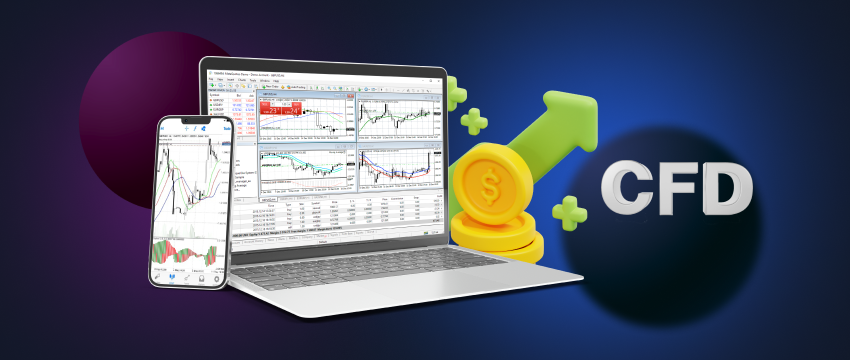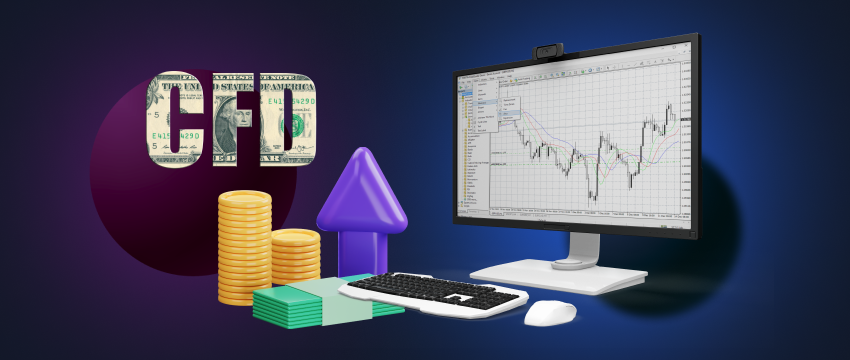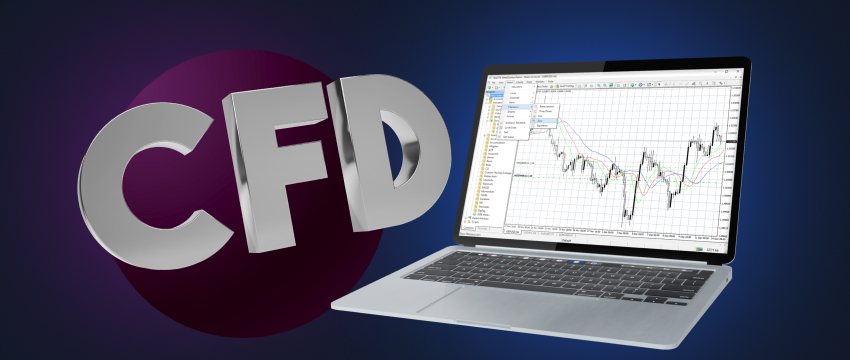CFDs have gained massive popularity in the last several years. Largely due to their flexibility, use of leverage, and profit potential. These derivative instruments enable traders to speculate on the price movements of different underlying assets. Without the need to own the asset. But therein lies the confusion perhaps, in the access a CFD gives a trader to a variety of assets. Also whether the payment of a dividend becomes possible. This is what we’ll explore in this article.

The difference between CFD and traditional stock trading
In traditional trading, an individual gains the ability to own stocks or shares in a company. Entitling them to receive a portion of the company’s profits in the form of dividends. Dividends are typically distributed to shareholders as a reward for their investment in the enterprise. The value of the dividend payout is usually subject to specific criteria. However, it is typically a percentage of the company’s profits, paid out quarterly or annually. The company’s board of directors typically determines and requires shareholder approval for the distribution of dividend payments and amounts. Which may also take the form of reinvestment in additional stock.
CFD trading works differently from traditional trading. A CFD is ultimately a financial contract between two parties, i.e., a buyer and a seller, or in the context of trading, a broker and a trader. The contract gives a trader the ability to speculate on the rise and fall of prices. For various underlying assets, like stocks, currencies, and commodities, without having to take ownership of them. And therein lies the difference. CFD traders do not own the underlying assets. Rather, they engage in speculation about the price movements of those assets.
The question arises: Do CFDs pay dividends?
The answer: is NO.
Since the trader doesn’t own the underlying asset, they are not entitled to any dividends issued by the company. However, in the absence of dividend payouts in CFD trading. This doesn’t mean traders can’t earn gains from price movements and market fluctuations. Highly leveraged derivatives and CFDs provide traders with the opportunity to open either more or larger positions. With a smaller amount of capital.

What is leverage in CFD trading?
Regular stock trading calculates the cost by multiplying the number of shares by their price. When leveraged, you only require a portion of the total amount, not the full sum. This has contributed to making CFD trading an incredibly popular way to trade, particularly for someone with limited capital.
However, leverage is notoriously volatile, with a reported 80% of traders losing their capital when investing in CFDs. So why then do traders worldwide engage in CFD trading? Well, to understand the potential it offers for maximizing wins, one needs to properly understand how leverage works.
How does leverage work?
Leverage is essentially borrowed funds. In the scope of CFD trading, a trader will oftentimes “borrow” money from a CFD broker to be able to open a position that is larger than what their capital alone could facilitate. In other words, a trader can increase their exposure to the market by paying a fraction of the amount required for the trade.
How is leverage measured?
The leverage ratio usually expressed as a ratio of multiples, measures total exposure in comparison to the required capital. In other words, the ratio establishes the size of your trade (your position) versus your funds. The broker determines access to leverage, often expressed as 2x, 10x, 20x, etc. For example, if you have $200 and use a leverage ratio of 5x, you will be able to open a position valued at $1000.
However, the leverage that CFD trading offers not only amplifies potential gains, it also magnifies capital losses exponentially. Markets are volatile and prices fluctuate not only aggressively, but unexpectedly. Positions can very quickly take an unanticipated adverse turn, resulting in a potential loss of money far larger than expected.
This challenge becomes exacerbated if leverage is not properly managed. It’s what makes risk management strategies, such as setting stop-loss orders and proper position sizing, so crucial for mitigating the risks that CFD trading incurs.
Regulatory protection for retail customers
Over time, leveraged trading has become increasingly regulated to safeguard customers, particularly retail customers. Regulators worldwide have introduced regulations that have included the establishment of margin required and maximum leverage limits within their jurisdictions. This involves mandating brokers to provide customers with risk disclosures and ensuring traders are well-informed about the inherent risks associated with trading using leverage.
Become a skilled CFD trader
While CFDs don’t pay dividends in the traditional sense, it’s clear that CFD trading does offer an alternative way for traders to profit from price movements in various financial instruments. CFD traders must however be mindful of the costs and risks associated with this form of trading, and carefully consider the terms offered by their chosen broker. As with any type of trading, thorough research, risk management, and a clear understanding of the market are essential components for success in CFD trading.
One of the ways traders acquire the skills needed to navigate the CFD domain is by using a demo trading account. A demo account provides a real-life trading environment in which the trader can practice executing CFD trading strategies, and then measure outcomes.
Traders can use virtual funds to open leveraged positions and gauge how those positions perform. For someone only just kicking off their CFD trading journey, this provides an excellent opportunity to identify strengths and weaknesses in their strategies and their trading behaviors. Over time, traders will equip themselves better to make more informed trading decisions when transitioning to a live trading environment.
Open a demo trading account
In addition to a demo trading account, CFD traders at all levels of expertise also make use of educational resources to widen their scope of knowledge and stay ahead of trends. The internet is an infinite source of learning material, with something for everyone to learn from. Whether this is blogs, e-books, e-guides, podcasts, seminars, webinars, or online community platforms to engage with your peers, there exists a way for everyone to gain a trading-related education.
However, traders must conduct proper due diligence to ensure that they are learning from reputable experts and professionals. If you happen to stumble across someone offering 100% returns or 100% success rates, you’re probably better off taking a 180 as the chances of such promises being a scam are high, super high.

T4Trade Academy – Educational Resources
If you’re still unsure as to who to turn to for credible information and resources, consider using a broker whose goal is to help traders increase their potential for making great returns. A broker like T4Trade for instance gives its traders free access to the T4Trade Academy, which provides a wealth of trading-related information, tips, insights, strategies and so much more, delivered by a team of expert analysts and researchers.
Aside from those resources listed herein, T4Trade also offers a resourceful economic calendar to monitor global economic news and events, as well as daily (Monday – Friday) commentary via Live TV to stay aware of market trends, discover trading tips, and identify trading opportunities.
Regardless of what type of trading you engage in, remember that education is key to keeping you on top of your game. Ongoing learning is crucial to continuously refine your expertise and make better trading decisions. However, this learning must also be combined with proper risk management strategies and a robust trading psychology that guides you to trade based on proper data rather than on feelings like greed, fear, or anxiety.
CFD trading is challenging for even the most avid and experienced traders. Challenges multiply when you throw in leverage, volatile markets, and price movements that make your head spin. Exercise restraint, proceed with caution but have fun!
免责声明: This material is for general informational and educational purposes only and should not be considered investment advice or an investment recommendation. T4Trade is not responsible for any data provided by third parties referenced or hyperlinked in this communication.




